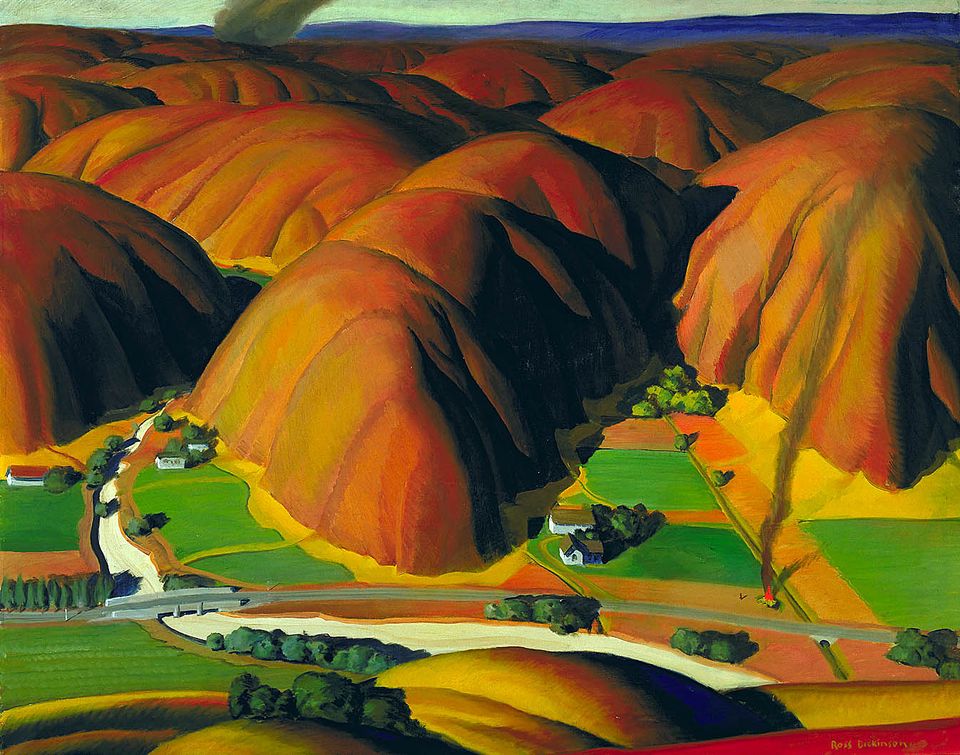Teacher Guides
Teacher Guides are free, downloadable PDFs.
Art and the Electromagnetic Spectrum
How do museum conservators apply science to analyze the condition of an artwork?
This lesson will help students understand applications of electromagnetic radiation in art conservation.

Jan Anthonisz van Ravesteyn, Judith Langley, n.d., oil on canvas
Primary Subject and Grade: 9-12 Science
Secondary Subject and Grade: 9-12 Visual Arts
Components: Lesson Plan, images, Student Activities
Standards: Science 9-12.5 Science and Technology; 9-12.6 Personal and Social Perspective.
Visual Arts K–12.6 Making Connections Between Visual Arts and Other Disciplines.
Videos
Exploring Art Conservation and the Preservation of the "Fighters for Freedom” Series
Keara Teeter, the Lunder Fellow in Paintings Conservation at the Smithsonian American Art Museum, discusses the role of an art conservator, her journey into the field, and the two-year process of carefully preserving artworks in William H. Johnson’s Fighters for Freedom series.
Preserving Nam June Paik's Electronic Superhighway
SAAM media conservator Dan Finn explains all that goes into conserving Electronic Superhighway, a masterpiece by Nam June Paik that is constructed of 336 televisions, 50 DVD players, 3,750 feet of cable, and 575 feet of multicolored neon tubing.
Auroras Are Weird
In this episode of SAAM's award-winning web series Re:Frame, join host Melissa as she crisscrosses the Smithsonian to learn about the Northern Lights and their depiction in a Civil War-era landscape painting.
Graphite!
Buffalo ≠ Bison
3D Scanning the Greek Slave
Watch how three different types of scanning technologies–laser scanner, light scanner, and photogrammetry–capture datasets that are combined to create a high-resolution geometric model of the most famous sculpture of the 19th century.
Get STEAMed: Art Conservation Teacher Workshop
Art conservation is a blend of science, art, math, and history. Using basic household objects, dig into this field, put your thinking to the test, and uncover student engagement strategies that support real-world learning.
Maya Lin on Folding the Chesapeake
"I think there's something so magical about waterways," says artist Maya Lin, whose Folding the Chesapeake is a cartographically accurate map of the Chesapeake Bay watershed made from glass marbles. The individual marbles evoke the thousands of separate yet interdependent species of flora and fauna comprising the bay’s delicate ecosystem.
Janet Echelman on 1.8 Renwick
Artist Janet Echelman explains how 1.8 Renwick represents cause and effect and the cycles of time. Her massive fiber and textile installation echoes the map of energy released by the 2011 tsunami near Japan. The title references the number of microseconds by which the day was shortened as a result of the catastrophic event.
Laurel Roth Hope on Peacocks and Pigeons
Artist Laurel Roth Hope’s work is influenced by her background as a park ranger and focuses on the relationship between humankind and nature, touching on topics such as environmental protection, animal behavior, and species extinction.
James Prosek on Field Guides and Silhouettes
Signaling the loss of biodiversity, James Prosek’s panoramic mural depicts a flock of passenger pigeons going through a forest of American Chestnuts. Both bird and tree, once so abundant, are now extinct.
Michael Sherrill on Ceramic Flora, Fauna, and Teapots
Artist Michael Sherrill talks about the inspiration he takes from the natural world and his three-dimensional thinking as a sculptor.
More Resources
Art and the Environment

George Inness, Niagara, 1889, oil on canvas, Smithsonian American Art Museum, Gift of William T. Evans, 1909.7.31
Take a deep dive into two 19th-century landscape paintings, The Grand Canyon of the Yellowstone by Thomas Moran and Niagara by George Inness, and consider humankind’s relationship to our natural surroundings on the education resource The American Experience in the Classroom.
Dust and Drought

Ross Dickinson, Valley Farms, 1934, oil on canvas, Smithsonian American Art Museum, Transfer from the U.S. Department of Labor, 1964.1.40
Explore the causes and consequences of environmental disasters of the 1930s by looking at Ross Dickinson’s Valley Farms (1934) alongside Alexandre Hogue’s Dust Bowl (1933) on the education resource The American Experience in the Classroom.
Ecosystems and Food Webs

Tom Uttech, Mamakadendagwad, 2015-2016, oil on canvas, Smithsonian American Art Museum, Museum purchase made possible by the American Art Forum, 2017.3, © 2016, Tom Uttech, courtesy Alexandre Gallery, New York
This distance learning lesson plan introduces students to ecosystems and food webs by applying their existing knowledge of systems and communities to new understandings of interdependence and interconnectedness.
Patterns in Living Things

Ad Reinhardt, Red and Blue Composition, 1941, oil on fiberboard, Smithsonian American Art Museum, Gift of Patricia and Phillip Frost, 1986.92.76
This distance learning lesson plan invites students (ages 5 to 8) to seek out patterns in nature and includes extension activities for math, music, and art.
STEAM: Art Conservation + Careful Decision-Making

Through a hands-on activity inspired by an ongoing design conundrum, students (4th-12th grade) will consider the value of ethical and informed decision-making in science and life. Appropriate for learning at home or in class.
STEAM: Art Conservation + Chemistry

Through a teacher-led demonstration and hands-on activity, students (8th-12th grade) will better understand the chemistry of basic batteries and scientific inquiry. Appropriate for in-class learning.
STEAM: Art Conservation + Design Thinking

Through a hands-on activity inspired by a real treatment, students (4th-12th grade) will utilize design thinking strategies and better understand the role of an art conservator. Appropriate for learning at home or in class.














